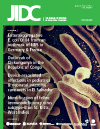Device-associated infections rates in pediatrics and neonatal intensive care units in El Salvador: Findings of the INICC
DOI:
https://doi.org/10.3855/jidc.1319Keywords:
health care-associated infection, nosocomial, intensive care unit, developing country, International Nosocomial Infection Control Consortium, INICC, mortalityAbstract
Introduction: This study aimed to determine the rate of device-associated, health care-associated infection (DA-HAI), the excess in length of stay, the mortality, and the hand hygiene compliance in a pediatric intensive care unit (PICU) and a neonatal ICU (NICU) in a hospital member of the International Infection Control Consortium (INICC) in El Salvador.
Methodology: A prospective cohort, active DA-HAI surveillance study was conducted on patients admitted in the pediatric and neonatal ICUs from January 2007 to November 2009. The protocol and methodology implemented were developed by INICC. Data were collected in the participating ICUs, and analyzed at INICC headquarters by proprietary software. DA-HAI rates were recorded by applying the definitions of the Centers for Disease Control and Prevention National Healthcare Safety Network.
Results: Of 1,145 patients hospitalized in the PICU for 9,517 days, 177 acquired DA-HAIs (overall rate 15.5%), and 18.6 DA-HAIs per 1,000 ICU-days. Furthermore, 1,270 patients hospitalized in the NICU for 30,663 days acquired 302 DA-HAIs (overall rate 23.8%), and 9.8 DA-HAIs per 1,000 ICU-days. The central line-associated bloodstream infection (CLA-BSI) rates in the NICU and PICU were 9.9 and 10.0 per 1,000 catheter-days respectively. The ventilator-associated pneumonia (VAP) rate was 16.1 per 1,000 ventilator-days in the NICU and 12.1 in the PICU.The catheter-associated urinary tract infection (CAUTI) rate was 5.8 per 1,000 catheter-days in the PICU.
Conclusions: DA-HAI rates in the PICU and NICU of our hospital were higher than international standards; infection control programs including surveillance and antibiotic policies must be a priority in El Salvador.
Downloads
Published
How to Cite
Issue
Section
License
Authors who publish with this journal agree to the following terms:
- Authors retain copyright and grant the journal right of first publication with the work simultaneously licensed under a Creative Commons Attribution License that allows others to share the work with an acknowledgement of the work's authorship and initial publication in this journal.
- Authors are able to enter into separate, additional contractual arrangements for the non-exclusive distribution of the journal's published version of the work (e.g., post it to an institutional repository or publish it in a book), with an acknowledgement of its initial publication in this journal.
- Authors are permitted and encouraged to post their work online (e.g., in institutional repositories or on their website) prior to and during the submission process, as it can lead to productive exchanges, as well as earlier and greater citation of published work (See The Effect of Open Access).








